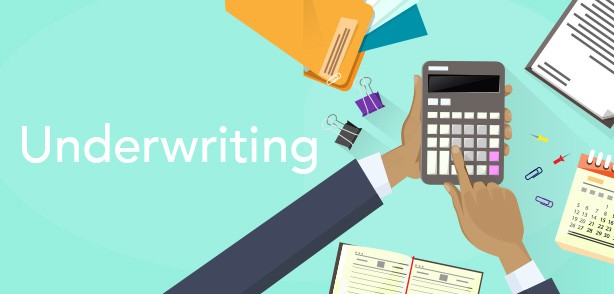
Explainer: The Underwriting Process
Underwriting is a process that financial institutions use to assess the risk of lending money to an individual or business. When you apply for a loan, mortgage, or credit card, the lender will assess your risk as a potential borrower. Understanding what underwriting means can help you get the financing you need. Each institution has criteria for determining whether a person or company poses too much trouble as a borrower, which is why not everyone gets approved for financing. But what does that mean?
If you’re considering applying for a loan, mortgage, or credit card and want to know what underwriting means, keep reading.
What is the purpose of underwriting
Underwriting is the process of evaluating a borrower’s ability to repay a loan. It is a critical part of the home-loan approval process, and a deficiency in one of these areas can result in a loan denial. This involves an evaluation of the property, the borrower, and the loan amount. This process is conducted by a team of financial experts, which typically includes a lending officer, an operations manager, a credit analyst, and a risk manager. The underwriting team works together to assess the viability of a loan based on several factors.
The team will examine the borrower’s credit history, employment history, debt-to-income ratio, and others. The team aims to determine whether the borrower is a safe investment. This process allows the lender to collect the necessary information to decide whether to approve a loan.
After the lender analyzes this data, the decision can be made to approve or deny the loan. With advancements in cutting-edge technology, some firms have begun using platforms such as Artificial to automate the underwriting process.
How does the process work
The process of underwriting a loan starts with the amount of money requested. Lenders will set a specific limit or amount of money they will lend to a borrower, which will be based on the underwriting process. The amount the lender will lend to a borrower is based on a few factors. First, the lender will look at the property value, the appraised value of the home, and how much the borrower(s) can afford to pay back. The lender will look at the borrower’s income and employment history to determine whether the borrower can afford the monthly payment. During this process, the lender will also look at a borrower’s credit history and debt-to-income ratio, so if you have used debt consolidation to clear debts in the past, for example, that may be taken into consideration too.
Types of Loans That Go Through Underwriting
All mortgage loans, home equity loans, and lines of credit are underwritten. This means that the lender will review the borrower’s financial situation to decide whether to provide financing. Subsidized loans require a larger down payment than other types of loans. The down payment is a percentage of the total loan amount paid upfront and put toward the purchase. Underwritten loans also have higher interest rates than fully guaranteed loans. Because there is more risk associated with underwritten loans, lenders charge a higher interest rate.
Costs Associated With Underwriting
As mentioned above, underwritten loans have higher interest rates than fully guaranteed loans. Underwriting is a risk assessment, and the lender may charge more interest because of this risk. Underwritten loans will also have a higher down payment requirement than fully guaranteed loans since the lender doesn’t know the seller. The increased down payment is meant to protect the lender in foreclosure. The lender will also charge a premium rate of interest on the loan. This premium rate is a percentage above the rate charged on fully guaranteed loans and will be applied to the total loan amount.
Bottom line
Lenders use the underwriting process to assess the risk of lending money to a borrower. This process is conducted by an underwriting team, which will look at a borrower’s credit history, employment history, and debt-to-income ratio. Underwritten loans have a higher interest rate than fully guaranteed loans because there is more risk associated with underwritten loans. Underwritten loans will also have a higher down payment requirement than fully guaranteed loans since the lender doesn’t know the seller.
Like many aspects of business, underwriting is slowly evolving to automation. A trend we see emerging throughout not just industry but the world. Whether a crackpot financial team or an A.I., it helps to understand the underwriting process.






